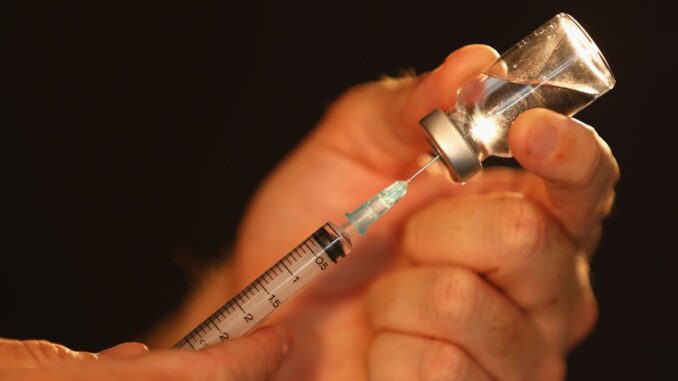
Testosterone is a male hormone. It is required for the development of male characteristics such as deep voice, facial hair, and muscular build. It also helps keep your bones strong, boosts the production of red blood cells, and sharpens your thinking ability.
Women also produce testosterone but in very small amounts. A slow decline or lowering of testosterone is normal as we age. But when the testosterone levels drop too low (referred to as low T), it can trigger many symptoms. This includes hair loss, low sex drive, infertility, reduced bone mass, and so on.
Diagnosis at the right time can help you manage and overcome these problems. In most cases, it is low levels of testosterone with several symptoms that make you eligible for treatment.
The best low testosterone treatment is said to be Testosterone Replacement Therapy (TRT). Many other medications and natural treatments are also used for boosting testosterone levels.
Testosterone Replacement Therapy (TRT)
Millions of men use testosterone replacement therapy (TRT) to restore low levels and feel healthier. In most cases though, men need to have both low levels of testosterone in their blood and several symptoms of low testosterone to go on therapy.
Even if your levels are low and you have symptoms, low T therapy is not always the first course of action. In case your doctor identifies the source for declining levels, for instance, weight gain or a particular medication, he or she may address the problem first.
Testosterone replacement therapy is administered in five different ways. They are:
- Transdermal: These are topical gels, creams, liquids, and patches. Also known as a topical medicine, they most often last for about four days. An air or water-tight dressing covered on top of the applied area ensures better absorption. The topical patch is more like a band-aid with medicine on it.
- Intramuscular: Testosterone injections are of two types. Short-acting and long-acting. The short-acting can be injected under the skin or in the muscle while the long-acting one is usually administered in the muscle. Injections are generally taken weekly, or every two weeks, or monthly.
- Oral/Buccal: These testosterone doses are usually given via the mouth. The buccal dose comes in a patch that is placed above your incisor. The medication looks like a tablet. The drug is slowly released over 12 hours. This way of administration is less likely to have side effects on the liver as compared to the ones that are swallowed.
- Intranasal: This is a testosterone gel where the given dosage is pumped into each nostril and taken three times daily.
- Implants: Testosterone pellets are injected inside the fatty tissues underneath the skin of your upper hip or buttocks. Normally local anesthesia is used to place it. The pellets dissolve slowly and are released over 3-6 months.
Most men experience improvement in symptoms within four to six weeks of taking TRT, although changes like an increase in muscle mass may take more time. It is usually around three to six months.
Creams, buccal tablets, nasal spray, gels, and underarm solutions such as Axiron, and patches can be administered on your own. They have to be done daily. Make sure women and children do not come in contact with them. Injections last longer and do not produce contact problems.
TRT for Women
Even though low T is more common in men than women, the latter is advised the same if their T-levels are very low. This disrupts their quality of life and many have benefited with TRT.
The benefits of TRT in women are:
- A healthier heart
- Strong bones
- Improvement in cognitive functions
- Better sex life
- Weight loss and reduced obesity
High T-libido boosters for women: These are dietary supplements that are specially formulated by keeping the physical requirements of a woman. They are believed to aid in the increase of energy, vitality, and stamina. As the name suggests, it improves your sex life by boosting your libido.
It is mostly made of testosterone-boosting herbs and roots with the necessary amount of essential nutrients.
Low Testosterone Medications
This includes various testosterone products, estrogen blockers, and aromatase inhibitors.
1. Testosterone products
Testosterone products such as patches, topical gels, nasal gels, and pellets are usually used as has been mentioned in the TRT section. Testosterone gel and transdermal patches are the most used because of the cost, ease of use, insurance coverage, and their ability to keep testosterone levels more or less stable.
2. Estrogen blockers
Testosterone replacement therapy typically reduces sperm counts and lowers testosterone production in the body. Both of these can be a problem for younger men who would like to start a family. Therefore, the other commonly used medicines are estrogen blockers.
Estrogen is predominantly a female sex hormone. However, it occurs in men too but in very small amounts. This hormone is important in keeping men active and healthy. It supports brain function and is critical for sperm production. Excess estrogen can inhibit testosterone production. This can lead to an imbalance in testosterone-estrogen levels. Estrogen blockers prevent this from happening, so the brain provides more hormonal stimulation for testosterone production.
Healthcare providers generally prescribe clomiphene citrate off-label to younger men with low testosterone. These medications are also used in older men who are not candidates for testosterone therapy.
3. Aromatase inhibitors
People who are overweight or obese often have an excess of the enzyme called aromatase that is produced via body fat. This enzyme converts testosterone to estrogen.
High estrogen levels in turn inhibit testosterone production. Aromatase inhibitors can halt this conversion normalizing the levels. Aromatase inhibitors can increase serum testosterone dramatically and decrease estrogen in men with age-related or obesity-related low testosterone.
Side effects of low testosterone treatments
Testosterone therapy also comes with certain side effects which range from mild to serious. Some of the side effects are (1):
- Acne and other skin reactions. For gels and liquids, some redness can occur at the skin site. Patches can lead to itching and a rash around the area. Though rare, some have complained of back pain as well.
- For injections, short-acting injections can have a little local skin reaction. However, long-acting injections can cause serious allergic reactions and when administered are closely observed for a while.
- Testosterone pellets can possibly lead to swelling, pain, bruising, and rarely hematoma.
- TRT also increases the risk of erythrocytosis (abnormal raising of blood hemoglobin and hematocrit).
Other symptoms include (2), (3):
- Enlarging breast (gynecomastia)
- Worsening sleep apnea
- Excess red blood cell production can be a contributory factor in forming a blood clot. This can lead to embolism which can be fatal.
- Shrinking of the testicle also known as hypotonic lax testicle
- Worsening of the prostatic hypertrophy
- Swelling of ankles, feet, or body
- Limited sperm production
- Increase the risk of heart disease
- Erectile dysfunction
- Dry eyes
- Cellulite
Apart from that, some studies have observed exacerbation of prostate cancer, male breast cancer, worsening benign prostatic hyperplasia (BPH), polycythemia, and an increased risk of obstructive sleep apnea (OSA). However, to make a proper assessment more studies are needed.
Natural Low Testosterone Treatment
It is possible to increase your testosterone levels naturally. Include testosterone-boosting foods and vitamin supplements that increase T-production, in your diet. Lifestyle changes such as getting adequate sleep, proper exercise, and weight loss can be the key to success.
Certain herbs have also been used for centuries to encourage the body to produce more testosterone. Examples of these include Horny Goat Weed, Tongkat Ali, and Ashwagandha.
To learn more, read: Natural treatments and Remedies for Boosting Testosterone
The Final Note
For people with clinical symptoms of low testosterone, treatment is important to prevent sexual, cognitive, and bodily changes.
There are a lot of treatment options available, providing you with choices that best meet your needs. Take your doctor’s advice and go for the right one. Low T is treatable.
Next: Natural Treatments and Remedies for Boosting Low Testosterone Levels
